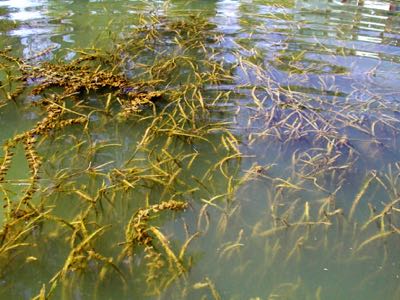Wild Celery
 Wild celery (Vallisneria americana) is a valuable and important species.
Wild celery (Vallisneria americana) is a valuable and important species.
Description
Unlike many of the canopy forming species characteristic of freshwater segrasses in Chesapake Bay, V. americana grows long, straplike leaves from basal clusters. These leaves can reach up to 2 meters in length.
Salinity Range
V. americana is a freshwater species that reaches greatest abundance in areas with very low or no salinity.
Reproduction & Growth
Vegetative propagation of leaf clusters occurs through growth of stolons, while in the spring regrowth is from over-wintering buds. Sexual reproduction occurs as pistillate flowers are fertilized at the water surface with pollen from free-floating staminate flowers that break away from the plant base.
Distribution
V. americana is widespread across eastern North America, northern Mesoamerica, and the Caribbean. Wild celery is most abundant in the upper Chesapeake Bay, including the Susquehanna Flats, and its major tributaries such as the Potomac River. In the York River system, beds have been observed in the Mattaponi River, but it may occur elsewhere in small beds, especially in freshwater regions of many small tributaries of the York.
Benefits
V. americana is an important habitat and food source for a host of aquatic organisms, including fishes, crabs, shrimp, crayfish, bivalves, epiphytes, and aquatic insects. It is used by more than 44 species of fishes including snook, seatrout, drum, bass, and sunfishes.
Threats
There are no known threats to the species.
Visit the IUCN page for range maps, conservation status, and other details.

